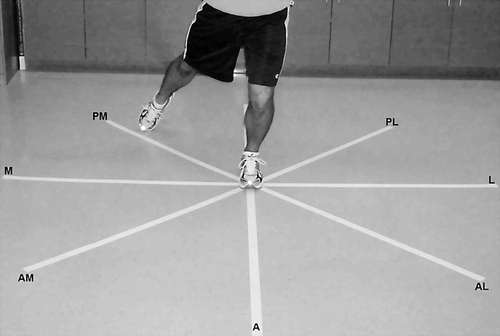Photo Credit: charlieweingroff.com
In our prior posts we have described the injury risks associated with athletic activities. There will always be an inherent risk with athletic participation but current research is identifying Physical Therapy tests which can help predict future injury. These test batteries involve movement assessments of functional positions such as squatting, jumping, and landing. The information gained from these pre participation screenings allows the Physical Therapist to identify known risk factors for injury including weakness, instability, and balance impairments.
The star excursion balance test is a function test assessing an individual’s ability to maintain stability on one leg as they reach their opposite leg in multiple directions. The distance reached is measured and compared from side to side. Asymmetrical movement patterns and reach distances have previously been shown to predict future risk of injury. In one study, athletes with a greater than 2 inch reach difference between legs were shown to be twice as likely to sustain an injury in the upcoming season.
A recent article in the Journal of Orthopedic and Sports Physical Therapy examined the predictive ability of the star excursion balance test among NCAA Division I athletes (Stiffler et al. 2017). 147 athletes were retrospectively analyzed after the completion of their season for both pre season athletic performance and injury status. 20% of these athletes sustained a non contact injury to their knee or ankle during their athletic season. Balance test measurements were analyzed in this group to determine the impact of pre season testing on the develop of a future non contact injury. The authors reported asymmetries in forward reach distance during the star balance excursion balance test were able to identify injury vs. healthy athletes. To learn more about pre season injury prediction testing visit your local Physical Therapist.

